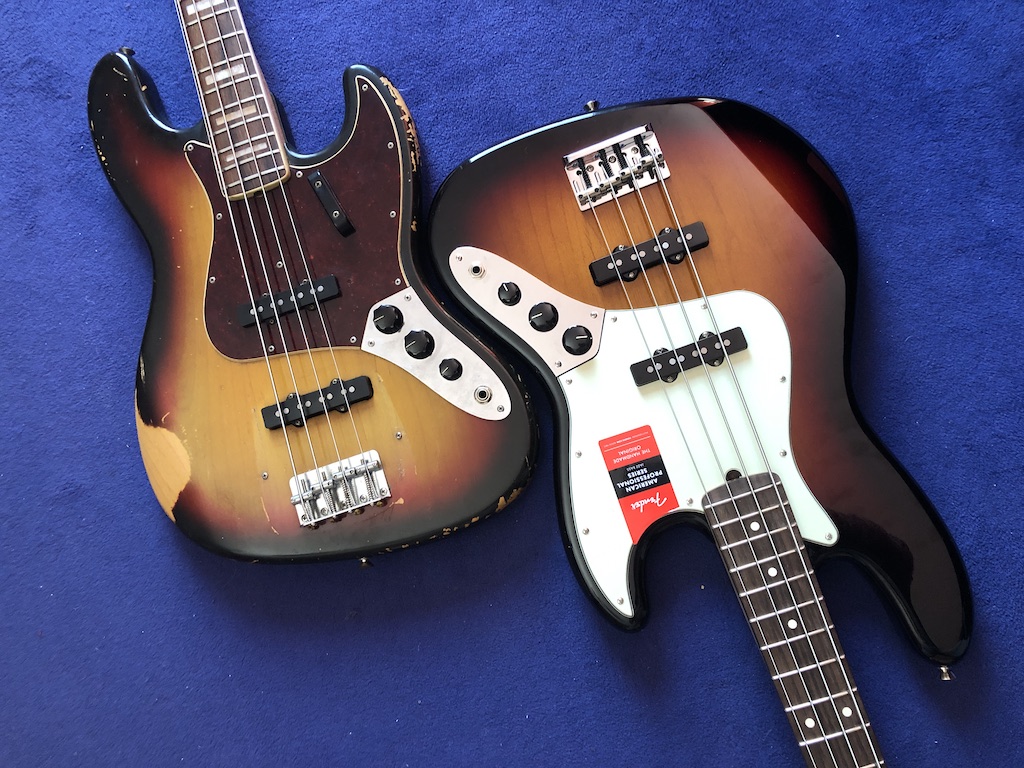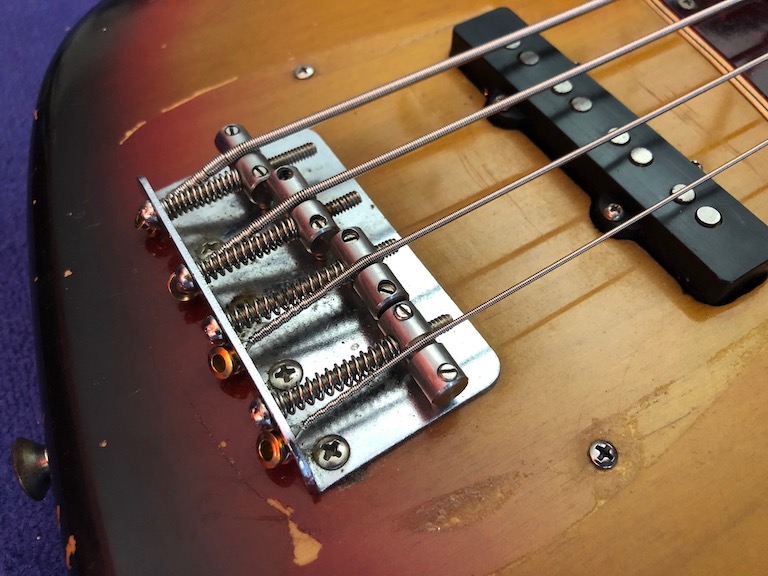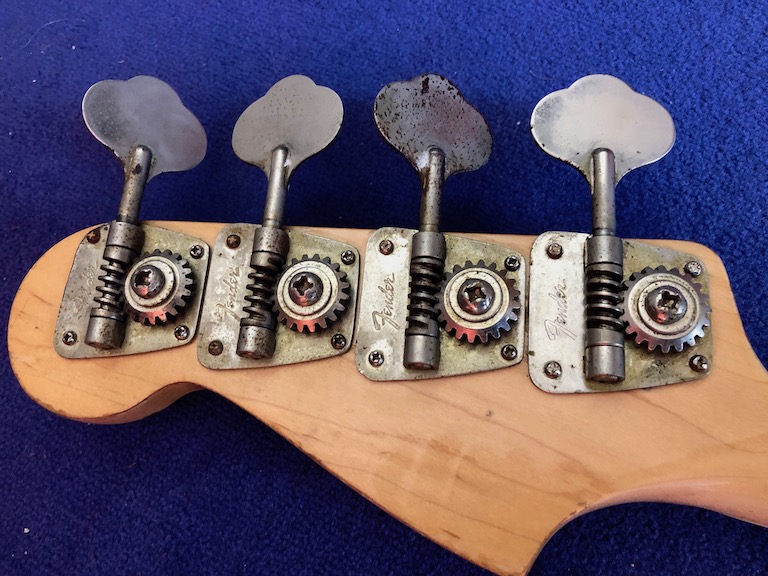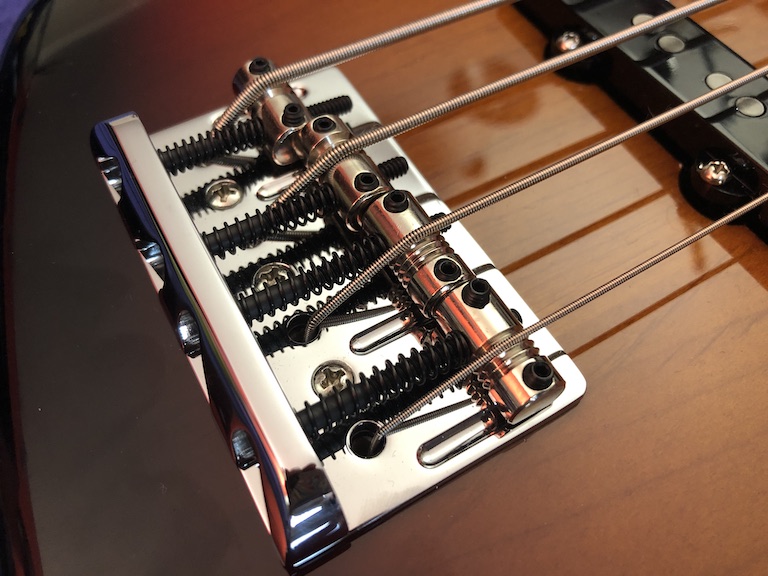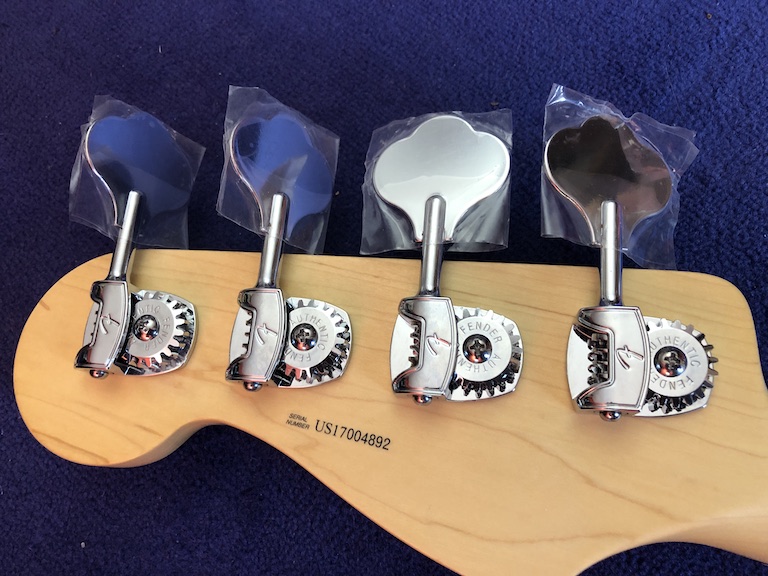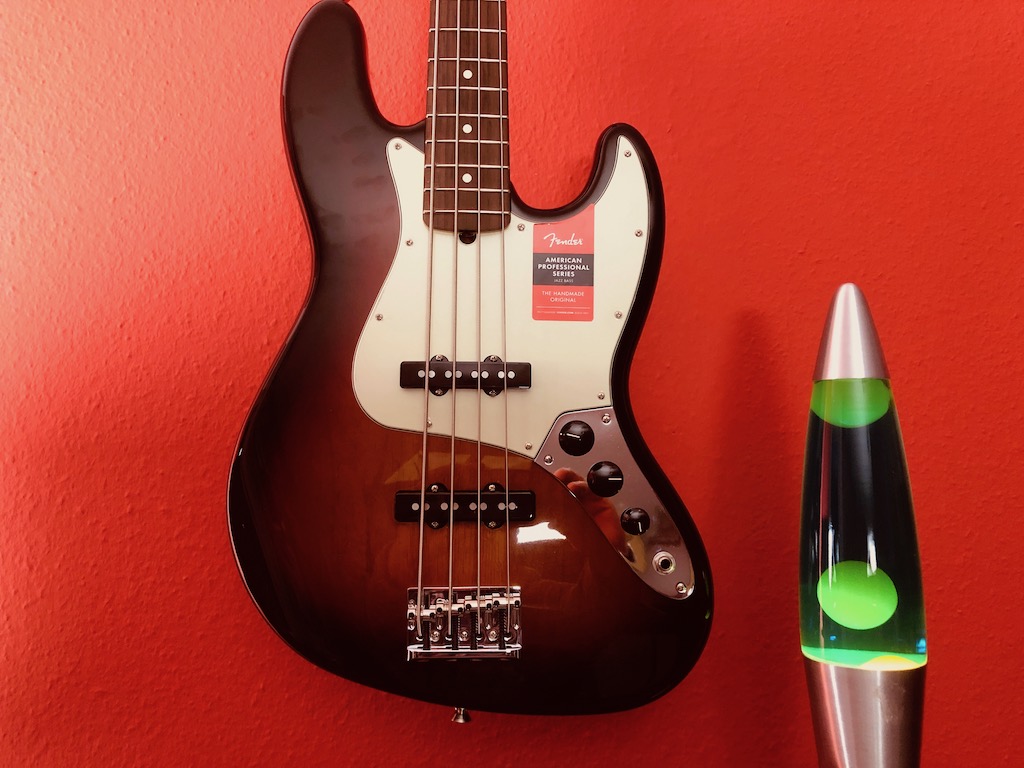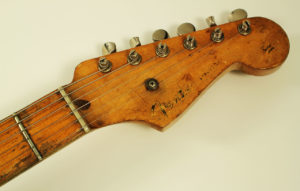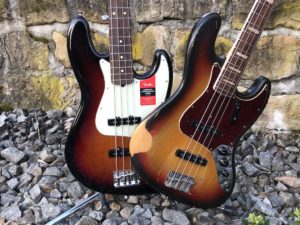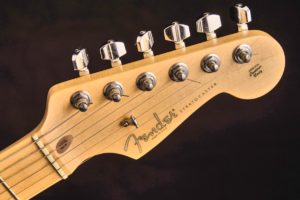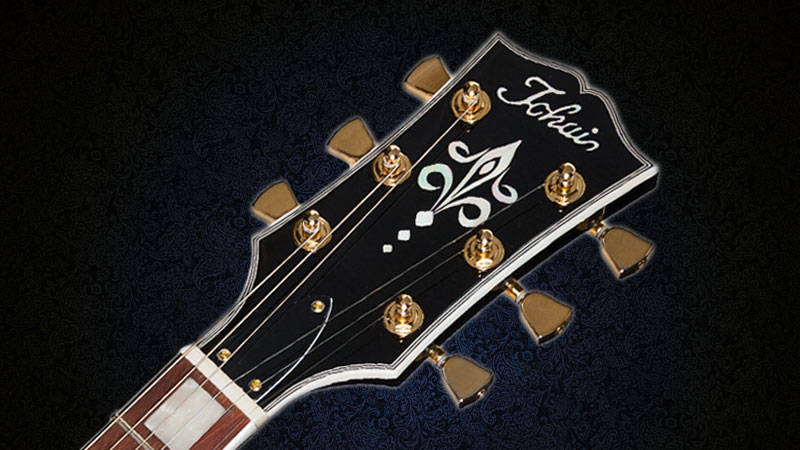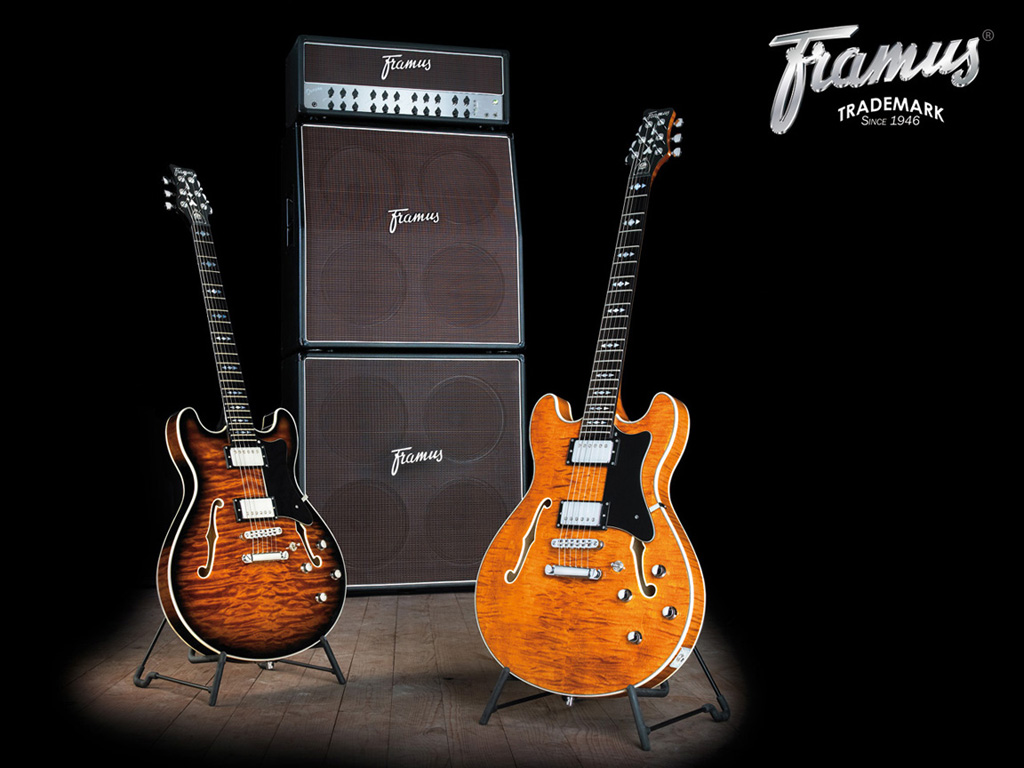Fender Jazz Bass – Vintage 1969 vs. 2019

The Fender Jazz Bass was introduced in 1960. It quickly developed into the standard instrument of the bass community. A list of users of this model would not only blow up this article, but the entire portal. Jazz is still popular today and people like to buy it. The legendary status of the Fender Jazz Bass can be read very well from the fact that almost every manufacturer of electric basses has a model on offer that is based on him in terms of design, pickup equipment, choice of wood or dimensions. That was a masterpiece, Mr. Fender!

Fender Jazz Bass: Differences between 1969 and 2019
In contrast to then, Fender manufactures in Corona today. The drawings, stencils and templates from Fullerton production arrived at the new plant undamaged. And so the dimensions of the instruments are identical, as are the materials. Erlebody, maple neck and rosewood fingerboard, the classic ingredients. The pickup positions are also identical.
There are differences with the bridge, which is much more massive with the new one. And the mechanics are half open. In 1969 the so-called “ashtrays”, the pickup covers, were still installed. Below the strings there is a screwed-on plastic part, to which one would nowadays say “Thumbrest” if it was positioned differently. That bothers when slapping and so it was not a mistake that Fender decided to leave out the sheets and this part at some point.
Unterschiede gibt es bei der Bridge, die ist beim neuen wesentlich massiver. Und die Mechaniken sind halboffen. 1969 hat man noch die sogenannten „Aschenbecher“ montiert, die Pickupabdeckungen. Unterhalb der Saiten findet sich ein aufgeschraubtes Kunststoffteil, zu dem man heutzutage bei anderer Positionierung „Thumbrest“ sagen würde. Das stört beim Slappen und so war es kein Fehler, dass Fender sich entschieden hat die Bleche und dieses Teil irgendwann mal wegzulassen.
One can reproach the manufacturer for the fact that in the last few decades, apart from recurring new infusions of the well-known classics, not much has happened in terms of modernizing and expanding the model grid. A few years ago I visited the Fender factory. The production conditions, machinery and processes are also far removed from modern production.
But wait a minute! The Fender Jazz Bass and the Precision are two of the most popular bass models of the last few decades. They are still bought like sliced bread. So why shouldn’t you trust the tried and tested here? Since we musicians generally don’t go overboard with innovations, the Californians are doing everything right here.
The “Pro” model is a flawlessly manufactured bass, flawless in all respects. A great instrument with a lot of traditional spirit. You can tell from the bass that the builders have a lot of experience and keep short-circuiting with musicians. There are signature models from jazz bass, for example, for Flea, Geddy Lee or Adam Clayton.
Differences in the sound of both Jazz Basses
I begged the guys from Thomann that they would provide me with this bass for the video and this report. Thankfully they did that. Thanks guys.
Since the bass is brand new and should also be sold as such, certain limitations were imposed on me for the test. String changes were not the order of the day. The standard Fender strings are also nickel-plated steel strings, like the DR sunbeams that I put on the ’69. So should be ok.
As was to be expected, there were tonal differences. The youngster sounds a bit more compressed, darker and “smaller” than the oldtimer. The dynamics of the old jazz bass, its vitality are amazing, it literally jumps at you. It is also a bit louder. I don’t even want to pursue the myth of swinging woods, the realignment of molecules and other theories. The fact is very simple: the old bass sounds better.
But we’re talking about different variations on the same theme. Both are unmistakable and show their colors with the first tones. They cannot deny their origins and set the sound bar very high for all copies and imitators.
I made a video for my YouTube channel about these two basses and their comparison, there you can hear various sound examples.
What I like most about my vintage Fender Jazz Bass
Fortunately, the ’69 is mine, which is why I’m used to it of course. Hardly surprising after all these years, the bass is well played, which is also noticeable in the optics. As is known, nitro lacquer is not the most durable solution for instruments, prone to sweat, temperature differences and easy to damage. But it just feels awesome. Especially after fifty years. The neck of this bass is awesome. Smooth, fast and you feel “at home”.
The paint job on the new one is perfect. In terms of “feeling”, however, it lags far behind. The smooth surface of the neck and body just feels new. The comparison of a new pair of shoes with an old, worn-in pair is an obvious one. Both fit well, but you feel more comfortable in the old couple. All of this is of course purely subjective, but emotions play a not insignificant role in music. As a result, subjectivity is also allowed in relation to instruments.
Conclusion: The Fender Jazz Bass convinces even after more than 50 years.
In fact, I’m wondering whether I want to take my old bass with me to the gig every weekend. Apart from a possible theft, a lot can happen on tour. So a replacement may have to be found in the foreseeable future. Then a model from the “Pro” series would certainly be right at the front of the selection. Especially since it is also available in cool colors.
The price of the oldies increases from year to year. At the moment it is somewhere between 4 and 5 kiloeuros. This makes it two to three times more expensive than its descendant. The vintage market for the Fender Jazz Bass has been booming for years. When purchasing an old instrument, investing money can also play a role. Where you spend your money is of course up to you. If you buy a Fender Jazz Bass, you always have an instrument classic that does well on every stage and in every genre. That can never be a mistake!
